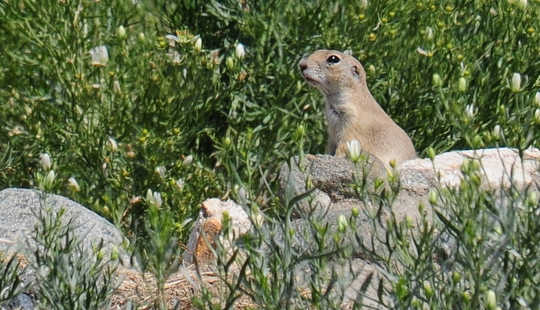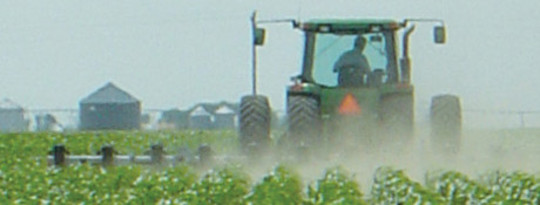 Many regions of the United States are struggling with water shortages. Large areas of the West are contending with moderate to severe drought, while California is now in the fifth year of one of the most extreme droughts in its history. Even non-arid regions, such as the Southeast, are not exempt from water shortages.
Many regions of the United States are struggling with water shortages. Large areas of the West are contending with moderate to severe drought, while California is now in the fifth year of one of the most extreme droughts in its history. Even non-arid regions, such as the Southeast, are not exempt from water shortages.
 Fossil fuel use will have to fall twice as fast as predicted if global warming is to be kept within the 2°C limit agreed internationally as being the point of no return, researchers say.
Fossil fuel use will have to fall twice as fast as predicted if global warming is to be kept within the 2°C limit agreed internationally as being the point of no return, researchers say.
 California has experienced, over the past few years, its most severe drought on record. In response to worsening conditions, Governor Jerry Brown announced the first ever statewide mandatory reduction in urban water use in April 2015. This calls on Californians
California has experienced, over the past few years, its most severe drought on record. In response to worsening conditions, Governor Jerry Brown announced the first ever statewide mandatory reduction in urban water use in April 2015. This calls on Californians
 It was Charles Darwin, almost 200 years ago, who first asked how it could be that coral reefs could flourish in relatively barren parts of the Pacific Ocean. This conundrum subsequently became known as Darwin’s Paradox.
It was Charles Darwin, almost 200 years ago, who first asked how it could be that coral reefs could flourish in relatively barren parts of the Pacific Ocean. This conundrum subsequently became known as Darwin’s Paradox.
 Scientists say that forecasts of a world food shortage need not prove as disastrous as previously thought if humans learn to use water more effectively.
Scientists say that forecasts of a world food shortage need not prove as disastrous as previously thought if humans learn to use water more effectively.
 It’s mid-February and along Britain’s south coast gilt-head bream are drifting from the open sea into the estuaries. Meanwhile, thousands of little egrets are preparing to fly to continental Europe for breeding season, though a few hundred
It’s mid-February and along Britain’s south coast gilt-head bream are drifting from the open sea into the estuaries. Meanwhile, thousands of little egrets are preparing to fly to continental Europe for breeding season, though a few hundred
 We don’t have to know exactly how high the sea might rise to start doing something about it.Climate scientists have recently been outraged by job losses within CSIRO. Sixty climate jobs are likely to be lost.
We don’t have to know exactly how high the sea might rise to start doing something about it.Climate scientists have recently been outraged by job losses within CSIRO. Sixty climate jobs are likely to be lost.
 Southern Africa has been experiencing high temperatures in recent months. In October, Zimbabwe experienced a heatwave with temperatures in Kariba reaching 45°C.
Southern Africa has been experiencing high temperatures in recent months. In October, Zimbabwe experienced a heatwave with temperatures in Kariba reaching 45°C.
 Scientists believe they may have found how to safeguard a staple tropical crop, on which hundreds of millions of people depend, from the depredations of climate change. They have discovered ? through conventional breeding rather than genetic modification ? 30 new “lines” (varieties) of beans that will thrive in the higher temperatures expected later this century.
Scientists believe they may have found how to safeguard a staple tropical crop, on which hundreds of millions of people depend, from the depredations of climate change. They have discovered ? through conventional breeding rather than genetic modification ? 30 new “lines” (varieties) of beans that will thrive in the higher temperatures expected later this century.
 Florida is a coastal state. Nearly 80% of its 20 million residents live near the coast on land just a few feet above sea level, and over a hundred million tourists visit the beaches and stay in beach-front hotels every year.
Florida is a coastal state. Nearly 80% of its 20 million residents live near the coast on land just a few feet above sea level, and over a hundred million tourists visit the beaches and stay in beach-front hotels every year.

Climate change is going to affect every city on the planet in some way—but not necessarily in the same way. For those cities already adapting to it, strong, decisive action may spell the difference between surviving global warming and succumbing to it. Five cities that are steeling themselves…and five that are fooling themselves.

In tropical developing countries, effective coastal management must acknowledge the widespread dependence of poor and politically weak communities on the use of fish for food. Acknowledging this dependence on artisanal fisheries is pivotal to reconciling the largely separate agendas for food security and biodiversity conservation.

Researchers tracking the movements of seals in the North Sea reveal that “artificial reefs” created by wind farms and pipelines are becoming attractive as foraging grounds on fishing expeditions.

I believe we have a problem — a big problem. According to demographers, by the end of this century we’ll have around 11 billion mouths to feed. Most of the additional 4 billion people alive then will be in developing nations.

I recently had the opportunity to engage in conversation with Guy McPherson about a number of topics and subsequently began reading his book Walking Away From Empire, Guy’s personal journey of leaving a tenured professorship to radically alter his living arrangements in preparation for the collapse of industrial civilization.

Dutch scientists have thought up a new use for all the carbon dioxide that pours from the chimneys of fossil fuel-burning power stations: harvest it for even more electricity. They could, they argue, pump the carbon dioxide through water or other liquids and produce a flow of electrons and therefore more electricity.

The world’s coral reefs are under threat. Some scientists say doses of cloud brightening could provide a solution to the problem. Here’s a new twist to the geoengineer’s dilemma: just change the climate locally – over the bit you want to protect – and leave the rest of the planet alone.

Trees may be getting more efficient in the way they manage water. They could be exploiting the higher levels of carbon dioxide in the atmosphere, growing foliage from a lower uptake of groundwater. If so, then the carbon dioxide fertilisation effect – predicted by theorists and observed in laboratory experiments – could be real.

Research into one of the world’s oldest and driest deserts has unearthed evidence of the evolutionary timeline for species that have avoided extinction by adapting to dramatic climate change
- By Kieran Cooke

Two more US states say they will require insurance companies to reveal how prepared they are to cope with risks related to climate change.
- By Paul Brown

One of the great stumbling blocks of climate talks in the last 15 years has been that America refuses to move to cut emissions of greenhouse gases until China does – but at the weekend leaders of the world’s two great polluters reached agreement to phase out one of the most potent of them hydrofluorocarbons (HCFs).
- By Paul Brown

One of Africa’s most distinguished scientists insists that in a warming climate the world needs to adopt genetically modified crops on a massive scale in order to feed the planet’s growing population.
- By Tim Radford

The good news is that some coral can recover from periodic warming of the oceans: the bad news is it might take too long.

















